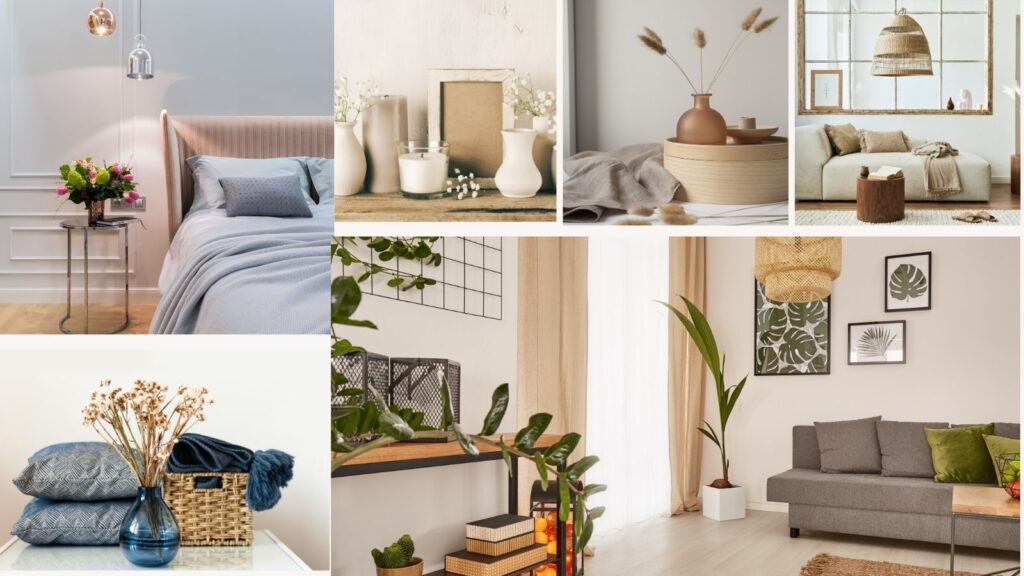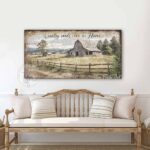Farmhouse style has its roots in rural life. It reflects simplicity and practicality.
This charming design trend is more than just a fad. Farmhouse style is about comfort and tradition. It brings a sense of the past into our modern homes. With its cozy and rustic elements, this style has captured many hearts.
But where did it all begin? Understanding the origins of farmhouse style helps us appreciate its timeless appeal. This beloved design has a story, one that connects us to simpler times. Let’s explore its beginnings and discover why it continues to thrive today.
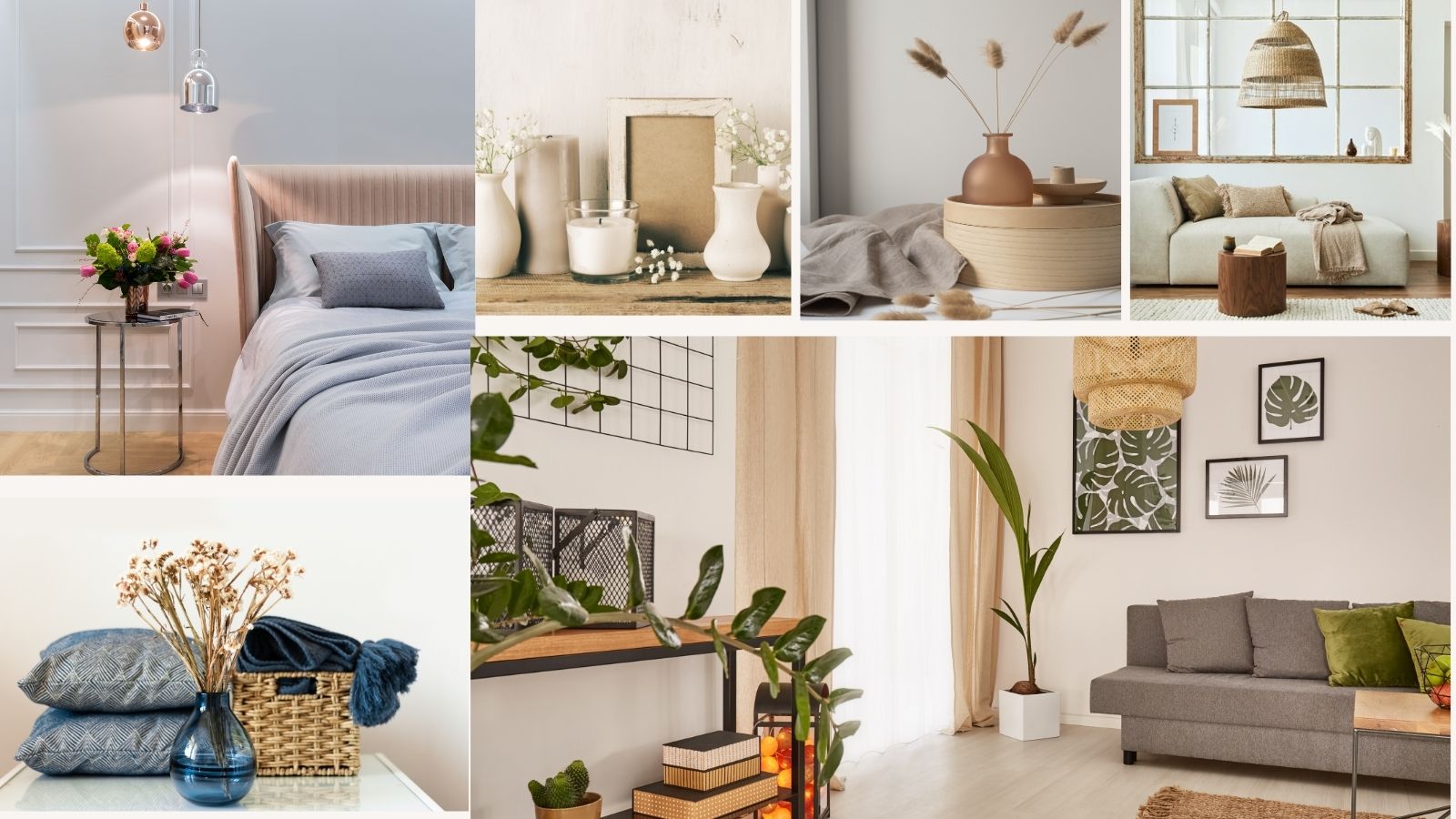
Historical Roots
The charm of farmhouse style has captivated many homeowners. But where did this beloved aesthetic come from? To understand its allure, we must delve into its historical roots. This journey takes us through early influences and European inspirations that shaped this timeless design.
Early Influences
The farmhouse style originated from the practical needs of farmers. In the early days, homes were built for function, not fashion. The materials were often locally sourced. Wood, stone, and brick were common. Farmers needed durable, affordable, and simple structures. These homes had open floor plans. This made it easier to move around and work.
Early farmhouses featured large, welcoming kitchens. They were the heart of the home. Families gathered there for meals and conversation. This layout fostered a sense of community and togetherness. Over time, these practical elements became key features of the farmhouse style.
European Inspirations
European settlers brought their own architectural styles to America. They influenced the farmhouse design significantly. English, German, and Dutch settlers contributed unique elements. For example, the English cottage influenced the cozy, inviting feel. The German settlers introduced sturdy, practical designs.
Moreover, French country homes added elegance to the farmhouse style. They combined rustic charm with refined details. This blend created a warm yet sophisticated look. Thus, European inspirations played a crucial role in shaping the farmhouse aesthetic.
In summary, the farmhouse style is a mix of practicality and charm. Its roots lie in the early needs of farmers and European influences. This blend of history and culture makes it a beloved design choice today.
American Farmhouse
The American Farmhouse style captivates with its rustic charm and timeless appeal. Rooted in the agrarian past, it reflects a blend of practicality and comfort. This style has evolved through different periods, each adding unique elements to its character.
Colonial Beginnings
The origins of the American farmhouse can be traced back to the Colonial era. Early settlers in the 17th century built homes from local materials like wood and stone. These homes were simple and functional, designed to withstand the harsh climate.
Colonial farmhouses featured steep gable roofs, large chimneys, and symmetrical layouts. They had centralized hearths for cooking and heating. The interiors were often open-plan to allow for flexibility in use. This design philosophy laid the foundation for the enduring farmhouse style.
19th Century Developments
The 19th century saw significant developments in the American farmhouse style. As the country expanded westward, the design evolved to meet new needs and preferences. Homes became larger and more elaborate.
During this period, the use of porches became common. They provided a shaded outdoor space for relaxation and socializing. Bay windows and decorative trim also gained popularity, adding a touch of elegance.
The advent of the Industrial Revolution introduced new materials and techniques. Prefabricated elements allowed for quicker construction and more intricate designs. Despite these changes, the core values of simplicity and functionality remained intact.
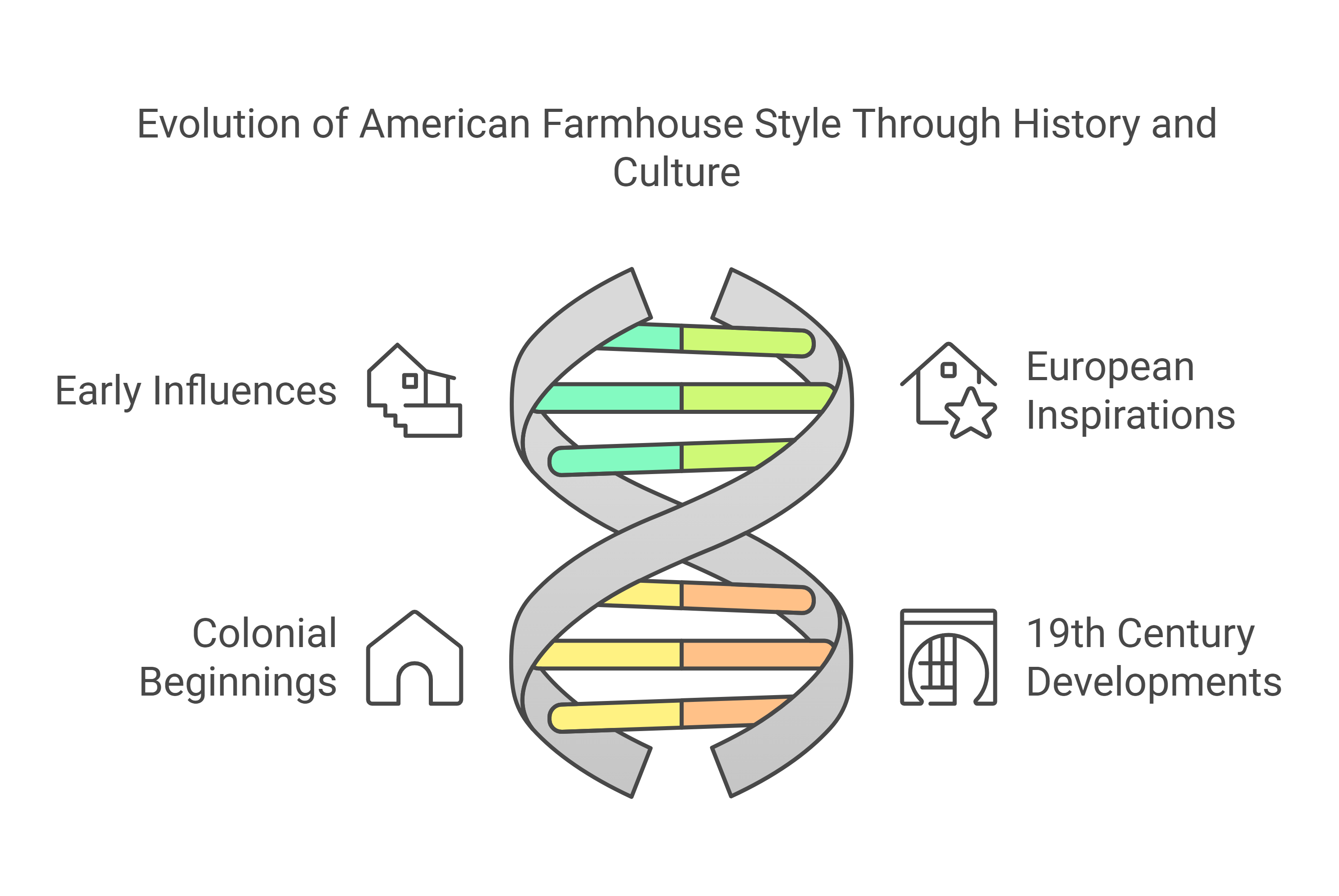
Architectural Elements
The architectural elements of farmhouse style are rooted in simplicity and practicality. These elements reflect the rural origins of the style. They combine beauty with function, creating a warm and inviting atmosphere.
Distinctive Features
Farmhouse style architecture often includes large, welcoming porches. These porches create a seamless transition between indoor and outdoor living. Exposed wood beams add a rustic charm. Wide plank floors are another distinctive feature. They provide durability and a timeless look. Many farmhouse homes also feature gabled roofs. These roofs add character and allow for better rain runoff.
Practical Design
Farmhouse architecture prioritizes functionality. Open floor plans are common. They allow for easy movement and social interaction. Large, divided light windows are also typical. These windows let in plenty of natural light. Built-in storage solutions are a practical element. They help keep the home organized and clutter-free. Simple, sturdy materials like wood and metal are often used. These materials are both practical and aesthetically pleasing.

Credit: www.vigoindustries.com
Cultural Impact
The farmhouse style has deep roots in history. Its cultural impact is significant. The charm and simplicity of this style appeal to many. It brings a sense of nostalgia and comfort. Let’s explore how rural life and community influenced this style.
Rural Lifestyle
Farmhouse style reflects the essence of rural living. It emphasizes practicality and simplicity. Farmers needed functional homes. Their houses were built with available materials. Wood, stone, and metal were common choices. The design focused on durability and utility. This created a warm and inviting atmosphere. The decor was minimal but meaningful. Every piece had a purpose. This practical approach influenced the farmhouse aesthetic.
Community Influence
Community played a key role in shaping farmhouse style. Neighbors helped each other with home building. This fostered a sense of togetherness. Shared resources led to similar home designs. This created a cohesive look in rural areas. Social gatherings were common in farmhouses. Large tables and open spaces were needed. This encouraged communal living and bonding. Farmhouse style represents these values. It reminds us of a simpler, community-focused way of life.
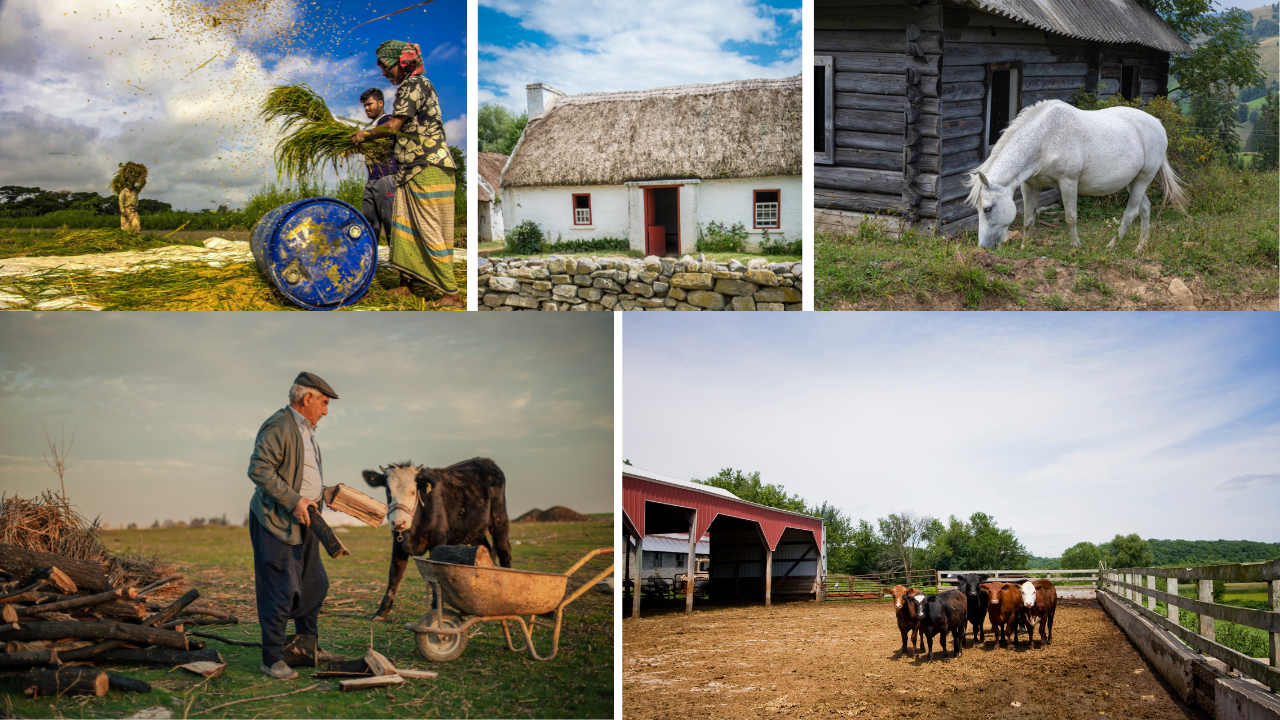
Modern Revival
The Modern Revival of farmhouse style has taken the design world by storm. This renewed interest in rustic charm and simplicity brings a fresh perspective to contemporary homes. By blending traditional elements with modern touches, the farmhouse style feels both nostalgic and current.
Contemporary Adaptations
Contemporary adaptations of farmhouse style focus on clean lines and minimalist decor. Homeowners enjoy open spaces with large windows to let in natural light. Modern materials like steel and glass mix with traditional wood elements. These combinations create a unique blend of past and present.
Here are some popular elements in contemporary farmhouse design:
- Neutral color palettes with whites, grays, and soft earth tones.
- Use of reclaimed wood for furniture and decor.
- Exposed beams and shiplap walls for texture.
- Industrial lighting fixtures to add a modern touch.
Popular Trends
Several trends have emerged within the modern farmhouse style. These trends make it easy to incorporate this aesthetic into any home. Here are some of the most popular:
| Trend | Description |
|---|---|
| Open Shelving | Practical and stylish, open shelves replace traditional cabinets. |
| Farmhouse Sinks | Large, deep sinks add functionality and rustic charm. |
| Sliding Barn Doors | These doors save space and add a rustic element. |
| Vintage Accessories | Items like antique clocks and woven baskets add character. |
The modern farmhouse style is versatile. It can be adapted to suit any personal taste. Whether you prefer a more traditional look or a sleek modern twist, this style offers plenty of possibilities.

Credit: www.instagram.com
Interior Design
The charm of farmhouse interior design is timeless. This style combines rustic elements with modern touches. It creates a cozy, lived-in feel. But where did it come from? Let’s explore its roots and key features.
Rustic Charm
Farmhouse style relies on rustic charm. It emphasizes simplicity and practicality. Natural materials are key. Wood, stone, and metal are common. These elements add warmth and texture to the space. They also create a welcoming atmosphere.
Vintage pieces are often used. They tell a story and add character. Think old wooden tables, distressed furniture, and antique decor. These items give the space a unique feel. They make it feel like a home with history.
Functional Spaces
Farmhouse design focuses on functional spaces. Every piece of furniture serves a purpose. Spaces are designed for real life. They are practical and user-friendly.
Open floor plans are common. They allow for easy movement and communication. This design makes the home feel larger and more open. It also encourages family gatherings and social interactions.
Storage is also important. Built-in shelves, cabinets, and nooks are popular. They keep clutter at bay and maintain a clean look. This ensures the space remains functional and organized.
Global Spread
Farmhouse style has a fascinating history, spreading its charm far and wide. Originally rooted in rural America, its appeal quickly transcended borders. The global spread of farmhouse style is a testament to its universal charm and adaptability.
International Appeal
The simplicity and comfort of farmhouse style resonate with people globally. It offers a sense of nostalgia and warmth that many cultures appreciate. From cozy cottages in Europe to modern homes in Asia, the farmhouse style has made its mark.
People love its rustic and relaxed vibe. The use of natural materials and simple designs appeals to a broad audience. This style blends well with various cultural elements, making it a versatile choice for home decor.
Cross-cultural Adaptations
Different regions have added their unique touches to the farmhouse style. This has led to exciting cross-cultural adaptations. In Europe, it often combines with traditional country elements. Think exposed wooden beams and stone walls.
In Asia, farmhouse style merges with minimalism. Clean lines and uncluttered spaces are common. Here, the focus is on simplicity and functionality. Natural light and open spaces play a significant role.
Latin America brings vibrant colors and patterns into the mix. Bold textiles and handcrafted items add a unique flair. Each region’s adaptation highlights the farmhouse style’s flexibility and universal appeal.
| Region | Key Features |
|---|---|
| Europe | Exposed beams, stone walls, vintage items |
| Asia | Minimalist design, natural light, open spaces |
| Latin America | Vibrant colors, bold patterns, handcrafted items |
Future Of Farmhouse Style
The farmhouse style has deep roots in history. Yet, its future looks bright and adaptable. As society evolves, so does our approach to design. The future of farmhouse style will blend tradition with modern needs. This will ensure it remains relevant and cherished for years to come.
Sustainable Practices
Sustainability is key in modern farmhouse design. People now seek eco-friendly materials and energy-efficient solutions. Reclaimed wood, solar panels, and natural insulation are becoming popular. These choices respect the past while protecting the future. Embracing sustainable practices makes farmhouse style timeless and responsible.
Evolving Trends
Farmhouse style trends are not static. They change with society’s tastes and needs. Modern farmhouse designs include sleek lines and minimal decor. The blend of old and new creates a unique charm. Open spaces and natural light are essential. These elements create a cozy and inviting atmosphere. Mixing vintage pieces with modern furniture adds character. This keeps the style fresh and appealing.
Frequently Asked Questions
What Is Farmhouse Style?
Farmhouse style is a design aesthetic inspired by rural farmhouses. It emphasizes simplicity, natural materials, and rustic charm. This style often includes wood accents, neutral colors, and vintage decor. Farmhouse style creates a warm, inviting atmosphere.
When Did Farmhouse Style Originate?
Farmhouse style originated in the 18th century. It began in rural farmhouses in Europe and America. The style evolved over time, incorporating modern elements while retaining its rustic roots. Farmhouse style remains popular today.
Why Is Farmhouse Style Popular?
Farmhouse style is popular for its cozy, inviting feel. It combines rustic charm with modern comforts. The style’s simplicity and use of natural materials appeal to many. Its timeless appeal fits well in various homes.
How To Achieve Farmhouse Style Decor?
Achieve farmhouse style decor by using natural materials like wood and stone. Incorporate neutral colors and vintage pieces. Add rustic accents such as distressed furniture and metal fixtures. Keep the design simple and functional.
Conclusion
Farmhouse style has deep roots in simplicity and functionality. It reflects a blend of rustic charm and modern comfort. This style evolved from rural farmhouses to today’s chic homes. People love its cozy, welcoming feel. Natural materials and neutral colors define it.
Farmhouse style is timeless and adaptable. It fits well in various home settings. Its journey from old farms to contemporary spaces shows its lasting appeal. Embrace this style for a warm and inviting home.

Sarah Bennett is a passionate home decor enthusiast and the creative mind behind ConsumerDecor. With a love for design and an eye for detail, she shares inspiring ideas, emerging trends, and practical tips to help readers create beautiful, functional living spaces. Sarah believes that every home deserves a touch of style, no matter the budget.

